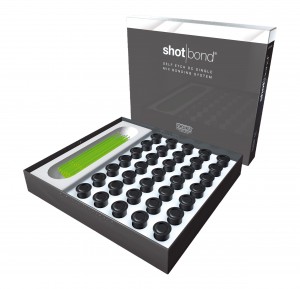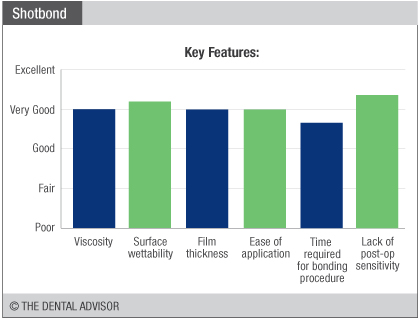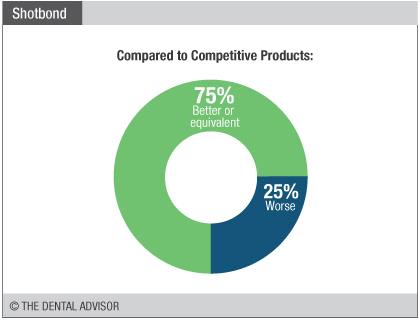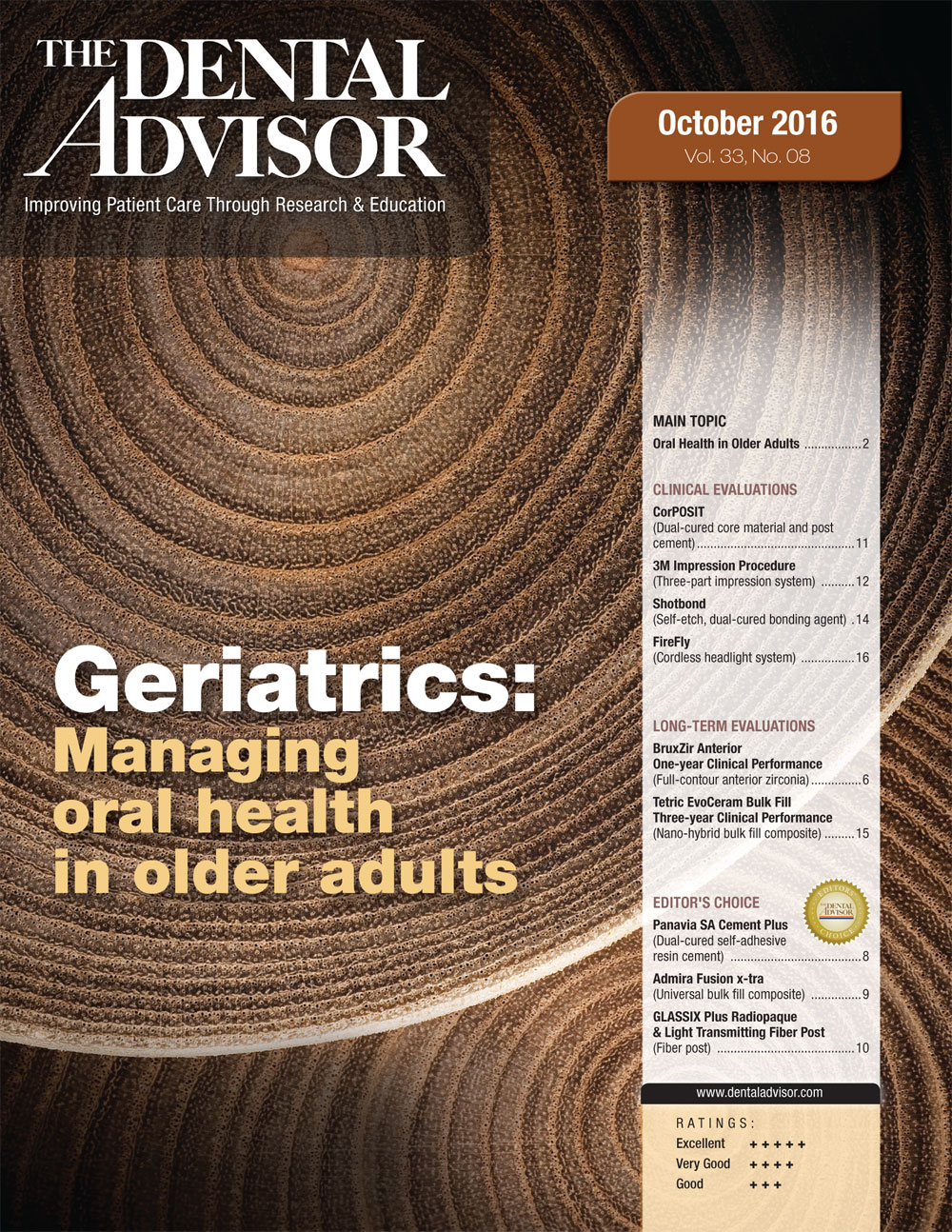Clinical Evaluations
Shotbond
Nordin Dental
http://www.nordin-dental.com
Consultants’ Comments
- “The packaging was terrific, once we figured out the best way to break through the foils and mix it.”
- “A very simple procedure.”
- “None of my patients reported post-operative sensitivity.”
- “Very nice material with lots of uses.”
- “The application time of 30 seconds, which is long.”
- “The unit dose is very nice but is wasteful for single teeth.”
- “I would like a wider and shallower well for better brush access and easier dispensing.”
Clinical Tips
- Make sure you break though both layers of the foil and mix it for about 15 seconds prior to bonding.
- Use the back end of a microbrush to break through foil packaging, and then mix with the brush end.
- Use an instrument to punch the seals and then swirl instrument around to help create more of an opening.
- Watch film thickness on adjacent cusps.
- Take care when placing the microbrush back in and out of the dispenser to avoid the foil layers getting in the way and wiping the bonding agent off the brush.
- Use for quadrant dentistry, there is plenty of bonding agent in the vial.
Evaluation Highlights
Shotbond was evaluated by 24 consultants, with an average of 21 uses per consultant.
- Unit dose packaging is convenient, well designed and stands nicely on the tray.
- Easy to use and good viscosity.
- Great wettability.
- Self-etching makes treatment easier for patients.
- Lack of post-operative sensitivity.
- A thin clear liquid with good film thickness, and has a pleasant odor.
Description
Shotbond is a self-etch, dual-cured bonding agent for direct restorative and adhesive procedures. It is mixed for 10 seconds, followed by application involving a 30-second scrub, 10-second air drying and 20-second dual-cure. Self-curing alone may be performed if preferred, taking between 3 and 5 minutes to achieve final cure. Shotbond is available in unit doses, packaged as 35 unit doses together with 35 disposable microbrushes.
Indications
- Direct composite restorations (self-cured, light-cured and dual-cured).
- Direct light-cured compomer restorations.
- Core build-ups.
- Fiber post cementation with self-cured or dual-cured composite cements.
- Bonding crowns, bridges, inlays and onlays.
Unique Features
When tested independently in THE DENTAL ADVISOR Biomaterials Laboratory we measured a bond strength of 36 MPa to dentin and 21 MPa to enamel when tested according to manufacturer’s instructions.





